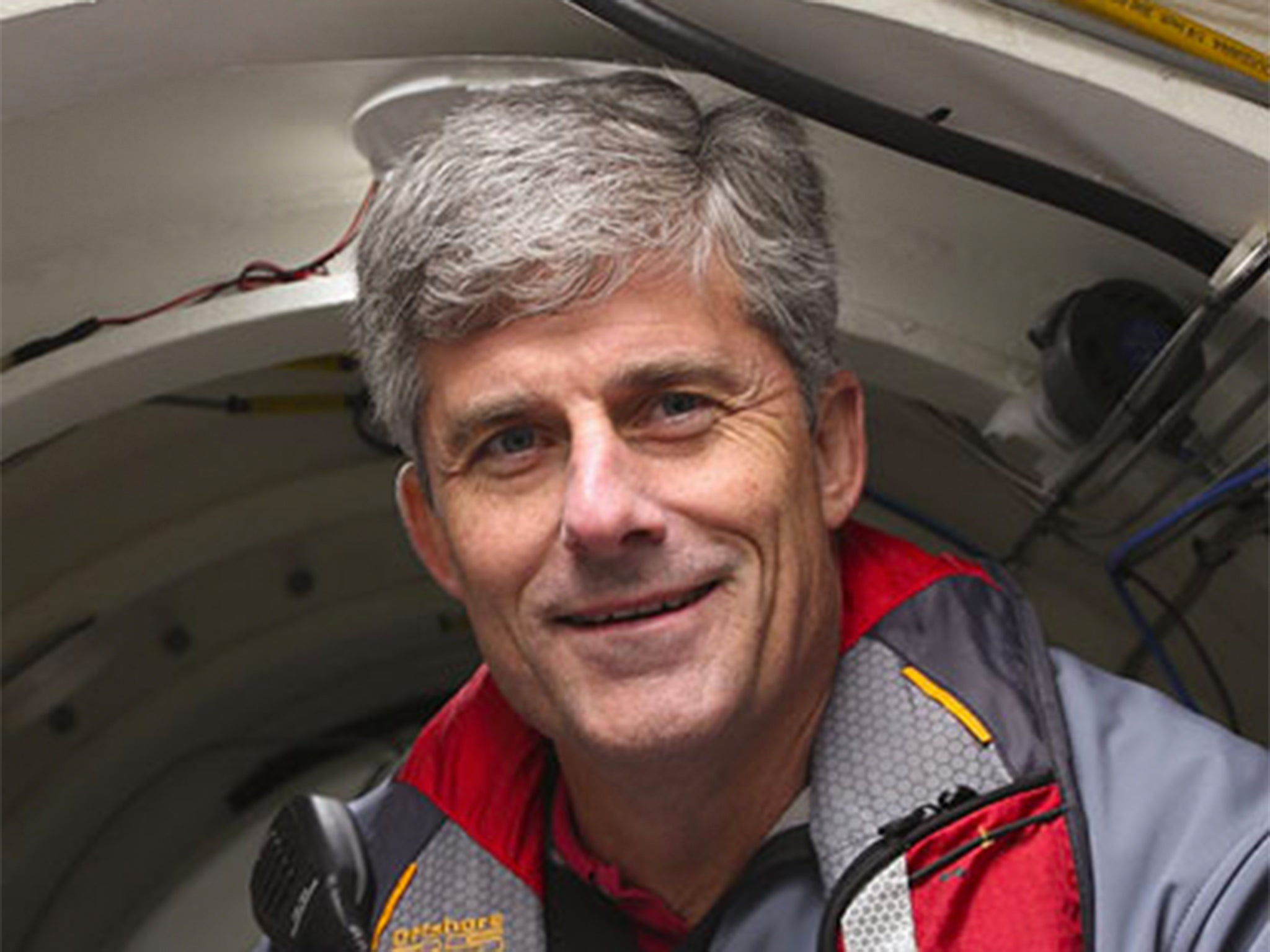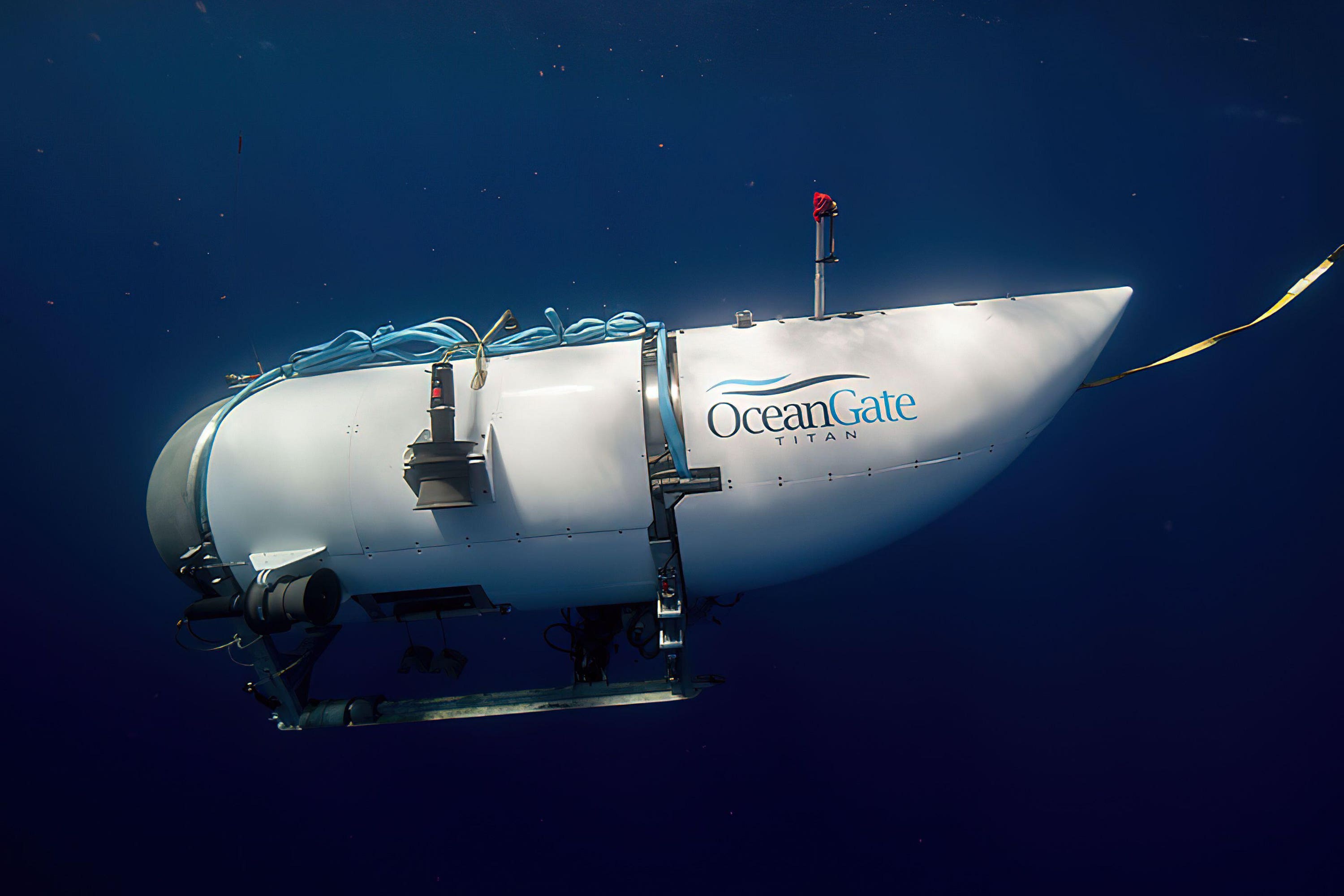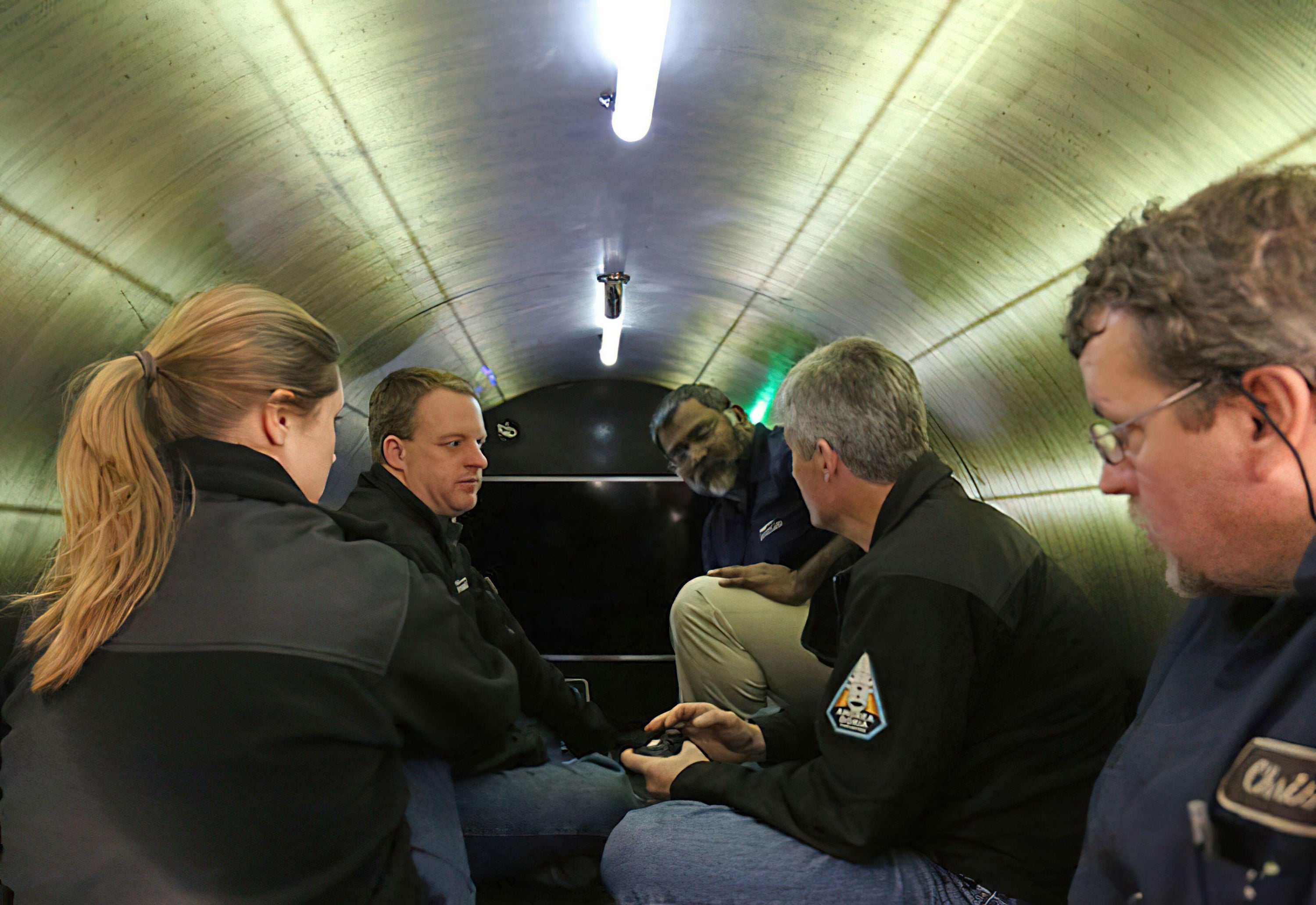Who is Stockton Rush? The OceanGate CEO killed in Titanic tourist submarine
Princeton graduate and Titan submarine entrepreneur insisted Atlantic dives were not dangerous and once said: ‘At some point, safety just is pure waste. If you just want to be safe, don’t get out of bed’
Stockton Rush, the CEO and founder of OceanGate Expeditions, was aboard his company’s Titan submarine that imploded after going missing on Sunday en route to the wreck of HMS Titanic around 370 miles east of the coast of Newfoundland, Canada.
The US Coast Guard announced during a Thursday press conference that the missing Titan’s pressure chamber was found among other debris, approximately 1600 feet from the bow of the Titanic on the sea floor by an ROV (remote-operated vehicle).
In a statement to The Independent, OceanGate — the private company that offers the $250,000-a-seat expedition — confirmed that the five passengers aboard the vessel are now believed dead.
The Titan was a cramped 22-feet long cylinder with an aerospace-grade carbon fibre hull capped with titanium hemispheres at each end, boasting a massive viewport window and 4K cameras to relay the marine environment outside back to those within but is otherwise sparse indeed.
Follow the latest updates on the missing Titanic submarine here.
Astonishingly, the craft was controlled by a generic video games controller – specifically a Logitech F710 Wireless PC Gamepad from 2011, according to gaming expert Matthew Ruddle – and, rather than using a GPS for navigation, it communicated with a tracking team aboard a surface ship, in this case the Canadian icebreaker the Polar Prince, via text messages.

According to Mr Rush’s biography on his company’s website, he graduated from Princeton University with a BSE in aerospace, aeronautical and astronautical engineering in 1984 and later from UC Berkeley Haas School of Business with an MBA in 1989.
He began his career as a pilot, qualifying from the United Airlines Jet Training Institute in 1981 at the age of 19 and serving as a DC-8 first officer on flights to Europe and the Middle East during his summers between college.
In the year he left Princeton, Mr Rush joined the McDonnell Douglas Corporation as a flight test engineer on its F-15 program, spending two years at Edwards Air Force Base on its APG-63 radar test and anti-missile programs.
In the year he left UC Berkeley, he personally built a Glasair III experimental aircraft, which he still owns and flies, and subsequently constructed a heavily-modified Kittredge K-350 two-man submarine, in which he has conducted more than 30 dives.

Between 2003 and 2007 he served on the Museum of Flight’s Board of Trustees in Seattle, Washington, also chairing the institution’s Development Committee for a year during his tenure.
He founded OceanGate Expeditions in 2009 – the company based in Everett, Washington – and the non-profit OceanGate Foundation in 2012 while also sitting on the board of BlueView Technologies, a manufacturer of high-frequency sonar systems that acquired subsea tech developer Teledyne in 2012.
Mr Rush also served on the board of enterprise software company Entomo and as chairman of Remote Control Technology, whose clients include Exxon, Conoco-Philips and Boeing.
He was interviewed about his Titan sub on a CBS Sunday Morning featurette last November and cheerily emphasised its “homemade” aspects, also pointing out handles affixed to the ceiling of the craft that he said he had bought from Camper World but denied that the vessel has been “MacGyvered” or “jerry-rigged”.
“I don’t know if I’d use that description of it. But, there are certain things that you want to be buttoned down,” Mr Rush told reporter David Pogue.
“The pressure vessel is not MacGyver at all, because that’s where we worked with Boeing and Nasa and the University of Washington. Everything else can fail, your thrusters can go, your lights can go. You’re still going to be safe.”
Mr Rush was also interviewed by Mr Pogue for the latter’s Unsung Science podcast that same month on which he was asked what he worried about at the depths of the ocean and answered: “What I worry about most are things that will stop me from being able to get to the surface. Overhangs, fish nets, entanglement hazards.”

On the safety of his missions more generally, he said: “I don’t think it’s very dangerous. If you look at submersible activity over the last three decades, there hasn’t even been a major injury, let alone a fatality. What worries us is not once you’re underwater.
“What worries me is when I’m getting you there, when you’re on the ship in icy states with big doors that can crush your hands and people who may not have the best balance who fall down, bang their head. That’s, to me, the dangerous part.”
Perhaps most revealingly of all, he added: “You know, at some point, safety just is pure waste. I mean, if you just want to be safe, don’t get out of bed. Don’t get in your car. Don’t do anything.”
Mr Rush also spoke to the BBC last year to promote his lucrative Titanic tours venture, which costs customers $250,000 (£195,000) per trip, telling viewers that deep sea travel “is amazing. It’s just such a different experience. It’s a totally different emotion”.
Explaining the appeal of pursuing the ghostly wreck of the doomed liner in particular, he said simply: “I read an article that said there are three words in the English language which are known throughout the planet. That’s Coca-Cola, God and Titanic.”
On Tuesday 20 June, it emerged that Mr Rush had been sued for fraud by a Florida couple who claimed their planned deep-sea voyage to the Titanic was repeatedly cancelled and attempts to secure a refund were ignored.
Marc and Sharon Hagle filed a lawsuit in Orange County in February that accused CEO Stockton Rush of defrauding them of $210,258 which they paid to secure two berths on a 2018 trip to the famed North Atlantic shipwreck.
The Hagles allege that they signed a contract and paid deposits in November 2016 to become one of the first of OceanGate’s paying customers soon after the Titanic expeditions were first publicised.
The Hagles further stated that Mr Rush made “false representations” that the vessel would be ready to dive to the Titanic by June 2018, and convinced them to sign a second contract pay the full $105,129 per-person fee.
The promised trip to the Titanic wreck in 2018 was later cancelled as OceanGate had not had sufficient time to certify the Titan to travel to the 4,000m depth, the Hagles said.
In addition to Mr Rush, British billionaire Hamish Harding, renowned French diver Paul-Henri Nargeolet, Pakistani businessman Shahzada Dawood and his 19-year-old son Suleman were also on board the Titan. All five passengers are presumed dead following the discovery of debris on Thursday.
The Coast Guard says that ROVs will remain in place but that it will begin to pull back equipment over the next 48 hours.
“This is an incredibly unforgiving environment out there on the sea floor. The debris is consistent with the catastrophic implosion of the vessel. We will continue to work and search the area down there but I don’t have an answer on prospects at this time,” said Rear Admiral John Mauger of the US Coast Guard.
The Rear Admiral said that sonar buoys had been in the water for the past 72 hours and that they had not picked up any evidence of an implosion, suggesting that it had happened early on in the dive.
Join our commenting forum
Join thought-provoking conversations, follow other Independent readers and see their replies
Comments


Bookmark popover
Removed from bookmarks